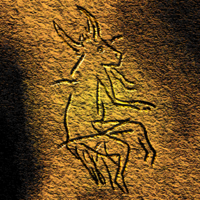
Photo from wikipedia
immediate kinship network’. Like Jaynes, he thinks it stems from the auditory hallucinations of the left brain, and seeks to explain how it developed following the transition from ‘bicameral’ to… Click to show full abstract
immediate kinship network’. Like Jaynes, he thinks it stems from the auditory hallucinations of the left brain, and seeks to explain how it developed following the transition from ‘bicameral’ to ‘postbicameral’ society, something that is supposed to have happened around 1000 BC. He also follows Jaynes in connecting the development of monotheism in the Axial Age with the full emergence of human consciousness. McVeigh’s framework leaves little room for socio-cultural specificity: his broad psychological explanations apply evenly from Mesoamerica to Mesopotamia. As well as this immense geographical and chronological coverage, the book traverses multiple disciplines. Its author is a sociocultural anthropologist who is using archaeological and historical material to make an argument about psychology and neurology. Although interdisciplinary perspectives often have strong advantages, archaeology and history lie outside McVeigh’s expertise and his book engages little with their broader scholarship. He repeatedly cites the Old Testament as evidence for ancient mentalities, for instance, but uses the King James translation rather than examining the nuanced meanings of the original Hebrew. Worse, the book makes statements for which we have no supporting evidence. It informs the reader that ‘ancestor worship is probably the earliest and oldest form of spirituality’ and that beliefs in spirit possession only developed after the erosion of bicamerality. Those living in the ‘bicameral period’ allegedly believed that statues of gods were ‘one and the same’ as the gods themselves, while only in the ‘postbicameral period’ did it occur to them that the effigy simply ‘contained a god’s essence’. This is pure supposition. The book is forcing evidence to fit a preconceived framework. Established Jaynesians will no doubt enjoy this engaging and polemical work – it even contains a foreword by the executive director of the Julian Jaynes Society. However, for those not convinced by the Jaynesian theory of bicamerality, McVeigh’s thesis will be a difficult sell. Broad-brush psychological frameworks do not explain much, and readers seeking a comprehensive discussion of the history of religion should look elsewhere.
Journal Title: Time and Mind
Year Published: 2017
Link to full text (if available)
Share on Social Media: Sign Up to like & get
recommendations!